Tigridia - a spectacular bulbous plant from the American subtropics, belongs to the Iris family. The flower attracts attention to its unusual shape resembling an exotic butterfly and an extravagant "tigrin" color, thanks to which the plant name occurred. There are about 40 types of tigridia, which can increasingly be seen in summer cottages, flower beds and flower beds. The characteristic feature of Tigridia is the shortness of flowering, her charming incredible beauty flower dismisses only one day. To decorate the flower garden and admire spectacular colors, tigridia is used in group landings. Tigridia is demanding of heat, light, easily multiplies and care for it is not difficult, and its attractive appearance will give a special highlight to any summer cottage.
Description of Tigria
Tigridia - a bulky perennial plant height from 30 to 70 cm with simple reprehensive or branching stems. On one plant appears and 4-6 blooms appear. Tigridia flower in diameter is about 10 cm, it consists of three large petals, which are located outside and three small spotted inner petals. Outdoor petals can be the most diverse: pink, yellow, orange, white, purple or red. A special attraction of the plant gives the marble pattern of internal petals, which resembles a tigeric color. With Latin, the name of the flower is translated as "like a tiger". Tigridia blooms for one day, so it is recommended to smear the plant with groups. Sit down several dozen plants will delight their alternate bloom for a month, as up to 5 blooms may appear from one bulb.
Tigridia, species and varieties
In gardens and flower beds you can find a type of Tigridia - Tigridia Pavlinia (Tigridia Pavonia). This species is ideal for growing in the open ground. The plant reaches a height from 40 to 60 cm, has a cylindrical stem, which contains wide light green leaves of the sword-shaped, pointed at the end. The unusual name did the species received thanks to the color of the flower core, which resembles a colorful peacock coloring. Flowers are planted with groups, they look wonderful as the decoration of borders or reservoirs.
The most famous varieties:
Tigridia Alba - the variety is distinguished by white large flowers, the diameter of which can reach 15 cm. The core of the flower is a motley in red tones. Very spectacular and beautiful variety, which most often can be found in flower beds. 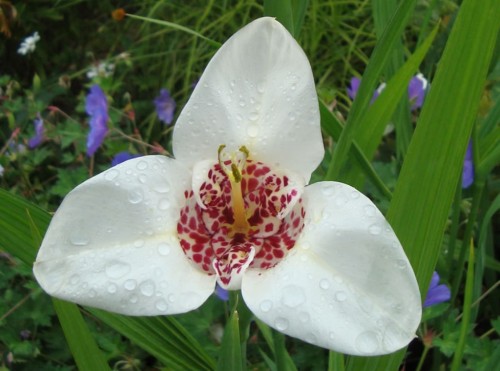
- Tigridium Canaryiensis is a grade with a pastel shade inflorescences, in diameter up to 15 cm. Flower decoration is a bright gentle of the middle of the red shades.
- Tigridia Auer - Spectacular Bright Yellow Petals Frame Pestry Core Flower. The plant has large buds - 15 cm.
- Tigridia Lilacea is a variety with delicate pink petals, a flower diameter up to 10 cm with a motley middle.
Tigridia, cultivation
Choosing a landing site and soil preparation
The correct selected place for landing Tigridia is the key to active growth and beautiful flowering plants. The plant is thermal-loving, so needs well-lit garden sites, where there are no drafts and winds. Tigrydia stems are rather fragile, thin and strong wind gust can break the plant.
Plant prefers light, loose, moderately wet soils with a neutral reaction. For tigridium, drigly or sandy soils are suitable, which must be prepared. The ground is made by humus, peat, compost, manure, ash and mineral fertilizers. If the ground is heavy, it needs to provide air and moisture conductivity, sand and fertilizer are introduced into the soil. Tight soil needs to be disappeared and putting sawdust into it, and in the soil with increased acidity it is recommended to add lime.
Landing Tigridi Lukovitsa
At the end of the spring, when the threat of frosts will be overwhelmed, the time of landing of Tigridia's bulbs comes to a well-hot-heated soil. The bulbs are very sensitive to temperature fluctuations and germinate at a temperature not lower than 20 degrees. In the northern regions it is recommended to pre-land the bulbs in drawers with drainage holes and leave them in a well-lit, warm room, for example, on a veranda, periodically watering. With the appearance of the first arrow, watering must be increased for active plant growth. When the present spring heat comes to landing tigridium into open soil along with an earthen room, so as not to disturb the root system.
Before planting in the ground, it is necessary to check the bulbs for the presence of plates of mold, rot. For landings, choose healthy dense bulbs. Prepare the wells, depth of 8 to 12 cm and moisturize them well. Follow the distance between the wells to follow 15-20 cm so that the sprouts grow well. Experienced flowers are recommended to do a warm bed for Tigridia to provide her more than a blossom. To do this, the drainage (broken brick) is stacked in the landing fossa, which is covered with horse manure (layer 25 cm), and sucks with loose soil from above. 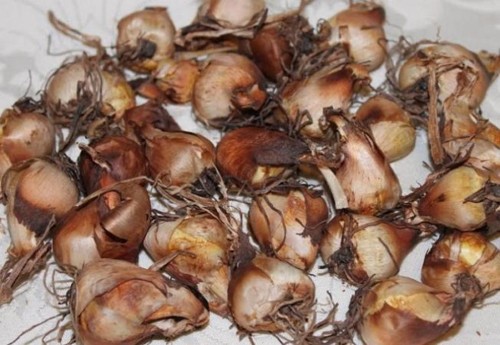
Tigridia, reproduction
Tigridia breeds in two ways: seeds and bulbs
Tigridia, landing seeds
Seed breeding method is used to obtain earlier flower flowering. Seeds have a good germination and do not require much care. If we make seeds in winter, then by the autumn of the Tigridium bulbs they will grow and will be ready for landing in the open soil next spring.
Planting seeds Tigridium is carried out in the garden ground for seedling. Such soil can be purchased in the store, and you can prepare yourself. It is necessary to mix the soil with a small number of peat or sand. 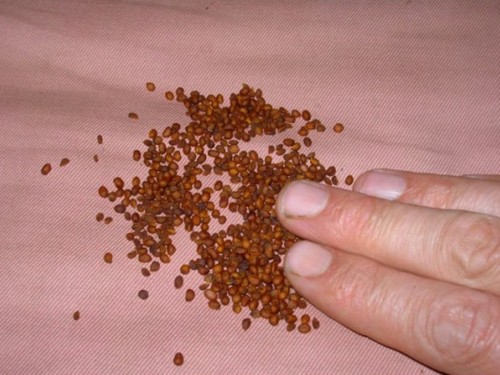
Prepared pots or containers are filled with soil for planting, which produces seeds. Capacities must have drainage holes, so that the moisture is not stored. Tigridia seeds do not need tolerance. It is necessary to evenly distribute them on the surface of the soil and pour the soil layer for 2-3 cm. During the seeds should be respected at least 5 cm, it will help to avoid further transplantation and thinning of the plant. With regular moisture, after three weeks, the first searches will appear. It is possible to plant seedlings into an open ground in May, when warm weather stabilizes.
Care for tigridia
Tigridia, landing and care for which is not complicated, requires compliance with some rules of cultivation.
For successful cultivation of tigridia, it is necessary to ensure:
- regular watering;
- loosening and mulching of the soil;
- feeding fertilizers;
- trimming;
- prepare bulbs to wintering.
Watering
Watering the plant preferably warm water as the soil drying. The soil must be well moistened so that the bulbs get the amount of moisture they need. In arid, hot weather watering need to increase and spray the ground part of the plant. After flowering when the plant starts fading, watering is reduced to prepare the bulbs to wintering.
Podchar
Tigridia needs feeding with liquid complex mineral and organic fertilizers. The first feeding is carried out during the period of active growth of the plant, when the first leaflets appear, the next feeding is carried out when buds appear for beautiful flowering.
Loosening and mulching
To keep the moisture and internal climate of the plant, the soil must be periodically disappeared and mulched.
Trimming
After flowering, faded inflorescences are removed. Protecting inflorescence helps to preserve the decorativeness of the plant and ensures the formation of new inflorescences.
Preparation for winter. Storage of Lukovitz
Tigridia is a thermal-liner, which does not tolerate winter in the open soil, so the bulbs of the plant need to dig and store until the next spring in the refrigerator on the lower shelf. The dug bulbs are dried at room temperature for a month. Then placed in paper bags, envelopes and go to the fridge to winter. Also, the bulbs can be stored in dry sand boxes in a well-ventilated basement, where the air temperature is from 4 to 10 degrees. If in the basement is increased humidity and there is no ventilation, the bulbs can be stored in the Kapron grid, in a suspended state.
Diseases and pests
The pests of the plant are bear, slugs, trips. The most dangerous pest, which eats the leaves and buds of the plant - cabbage scoop. To combat it, drugs are used, which are treated with soil, as the cabbage soil larvae dwells in the ground.
Among Tigridia diseases, you can allocate rotes and rust. For the prevention of these diseases, it is recommended to handle the bulbs in a solution of fungicide before their drying for the winter. At the first signs of the disease, the plant leaves are processed by antifungal agent.
Tigrydium in landscape design
Tigridia looks very beautiful in group landings when different varieties are planted. Bright, motley flowers create a colorful spectacular flowerbed, from which it is difficult to take eye. The motley flowerbed looks great on the background of green grass, coniferous, ornamental shrubs, as well as near reservoirs or stone. Tigridia is successfully grown not only in the open soil, but in pots and drawers. The flower will decorate its blossoms of the windowsill or a veranda, you only need to choose a sunny window for it.
Trigidia - a flower, which, seeing once, is no longer possible to forget. Its cultivation and breeding in the country area can not even with inexperienced flowers. Although time is his bloom one day, the beauty seen is remembered for a long time! From one bulb grow several shoots, so watching an unusual flower and enjoy it is blooming about two weeks. Therefore, planted tigridia groups and a cozy paradise in your garden will delight you all summer.

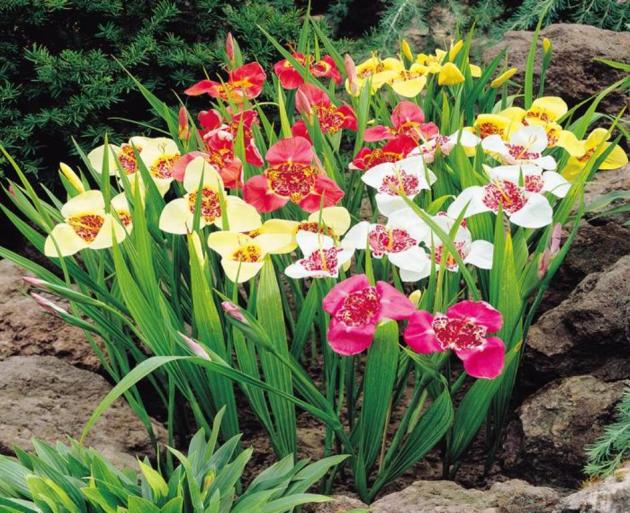
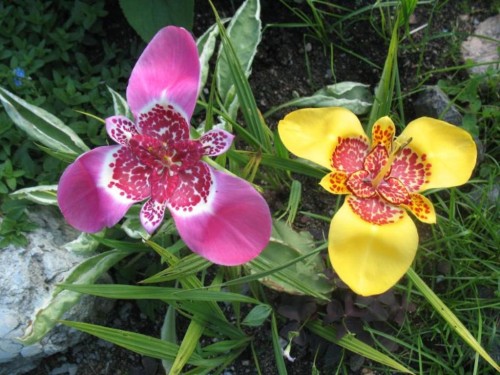

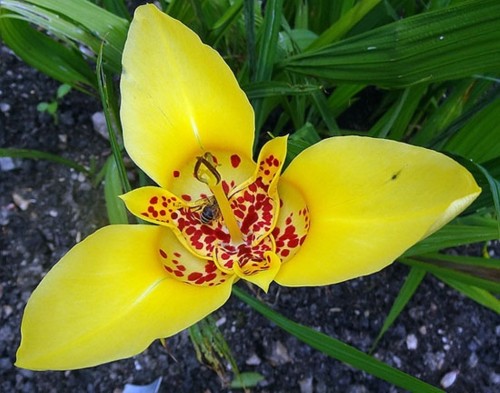
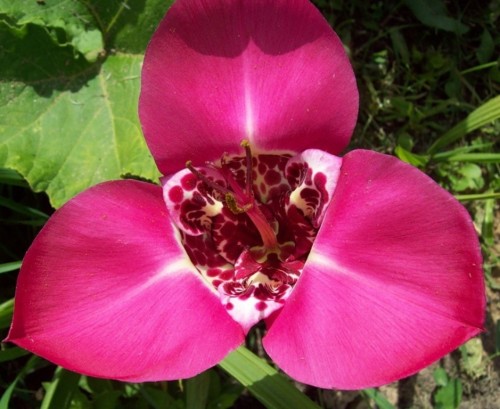
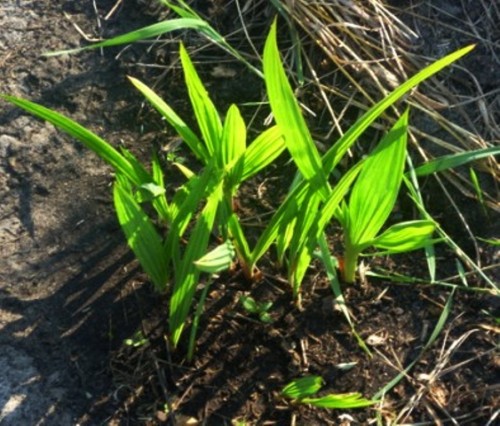
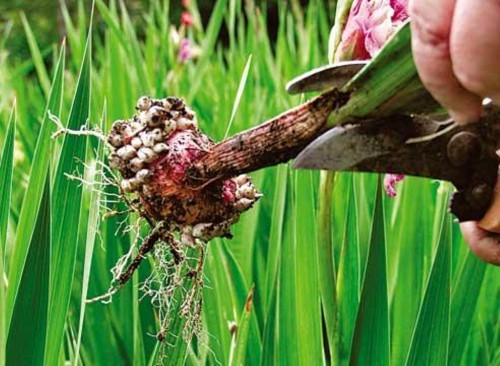
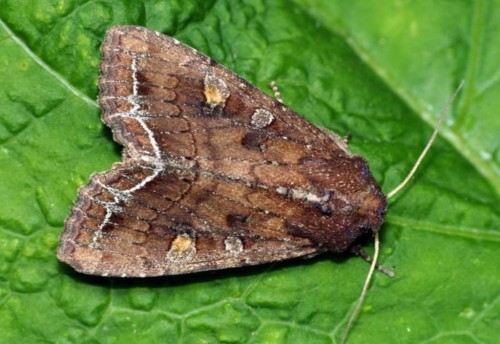
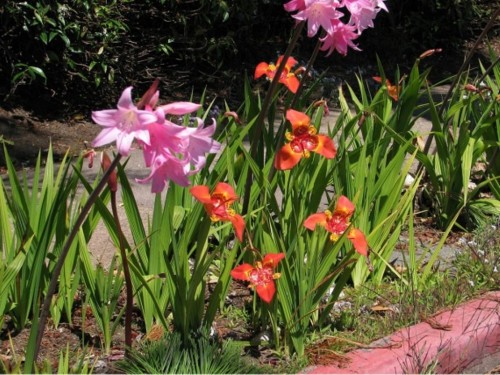
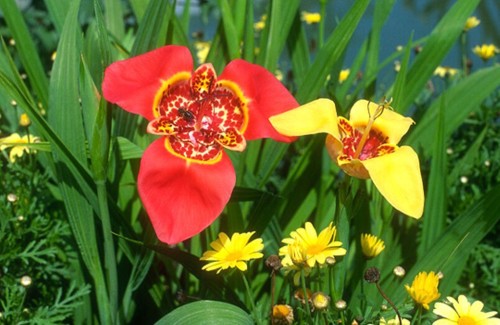
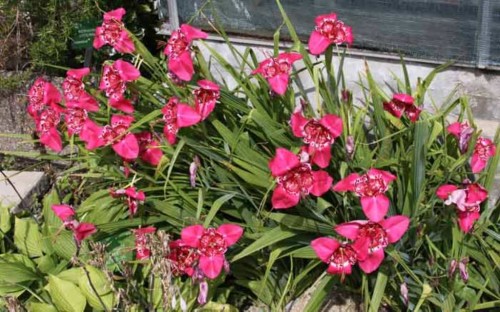

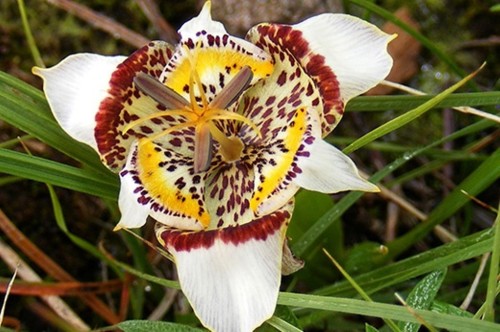
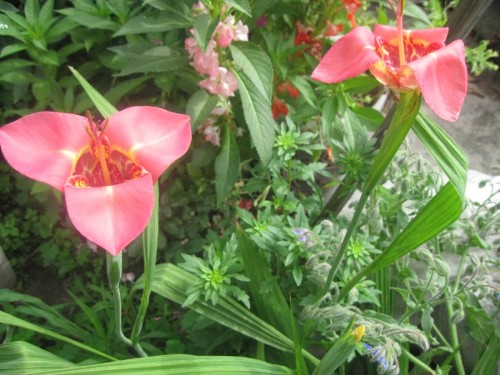
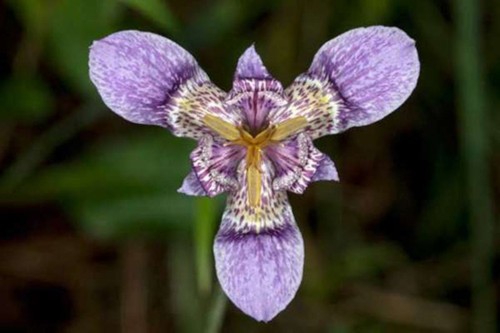
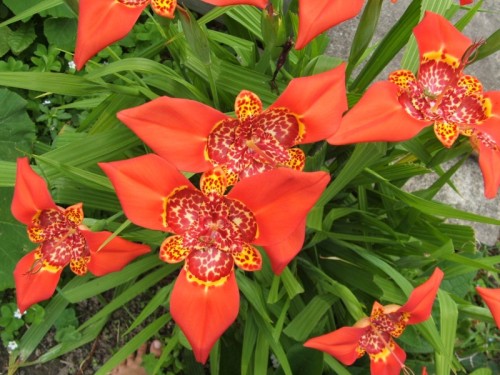













 Start a discussion ...
Start a discussion ...